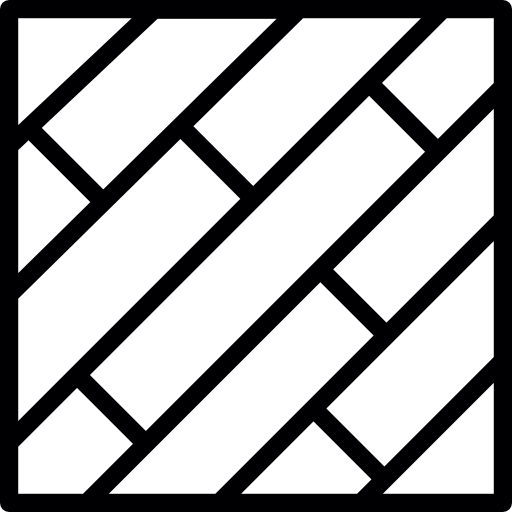Hardwood Glossary
This is a glossary of some of the common floor terminology, to help you get a better understanding of hardwood flooring.
Glossary of Common Engineered Flooring Terms
Decor Layer: The top finish layer of a laminate floating floor, adhered to an HDF core. The decor surface is a photographic reproduction of a real-wood surface or ceramic tile. The decor layer is covered with a top layer made of aluminum oxide.
Engineered Floating Floor: A hard-surface floor made from wood or other natural products adhered to a core such as High-Density Fibreboard (HDF) for structural stability and durability. An engineered floating floor is designed for minimal expansion and contraction with changes in interior temperature and humidity.
Expansion Gap: A gap (usually 3/8") that must be left around the edges of a room and any installed obstructions to allow for natural expansion and contraction in a floating floor that occurs with changes in room temperature and humidity.
Floating Reducer: A sloping, graduated moulding constructed of wood or polymer, used to join floating floor planks or tiles to an adjoining floor surface of unequal height.
Floating Stair Nose: A moulding constructed of wood or polymer, used along the leading edge of a stair tread to finish off the installation of floating floor planks or tiles over existing stair treads.
Glueless Floating Floor: Any engineered floor that fastens in place without nails or glue over an existing floor or subfloor.
High-Density Fibreboard (HDF): A high-strength, engineered fibreboard designef for applications where increased strength is needed. Made by compressing wood fibres with resins under high pressure into an engineered substrate. Often used as an engineeered floating floor core material. HDF pressure is greater than 50 lbs. per cu. ft. or 800 kg per cubic metre.
Laminate: A hard-surface floorcovering made with a melamine-impregnated decor layer with an aluminum oxide finish layer, and a HDF core on top of a melamine backing layer. Laminate floors have a high-resolution photo of wood on the top layer whereas engineered wood floors have a top layer of real wood.
Square Nose: A moulding constructed of wood or polymer, used to trim floating floors along walls around the perimeter of a room.
Subfloor: A pre-existing structural supporting surface, such as plywood, waferboard or concrete.
T-Moulding: A T-shaped moulding constructed of wood or polymer used to join floating floor tiles or planks of the same height together in dorrways between rooms. Also used in single large rooms where the distance is extreme and a mid-way joint is required for proper stability of floating floor tiles or planks.
Underlayment: Foam or other material such as Cork (which is also used as a sound barrier) and laid over an existing floor or subfloor. Floating floor planks or tiles are installed on top of the underlayment material.
Uniclic Joint: The joint system patented by Unilin Decor of Belgium. A glueless tongue-and-groove design milled to tolerances of 1/1000" in which the lower lip exerts constant pressure at a 45-degree angle on the tongue, holding it in place by constant pretension.
Wear Layer: The finish layer of an engineered floating floor such as Hardwood, Cork or Linoleum, adhered to an HDF core. A wear layer may be natural or stained with a finish colour. The wear layer is usually coated by a top layer of urethane.
Wear Resistance: The ability of the surface protection (such as aluminum oxide or urethane) that has been applied to either the decor layer or the wear layer, to withstand normal traffic.








